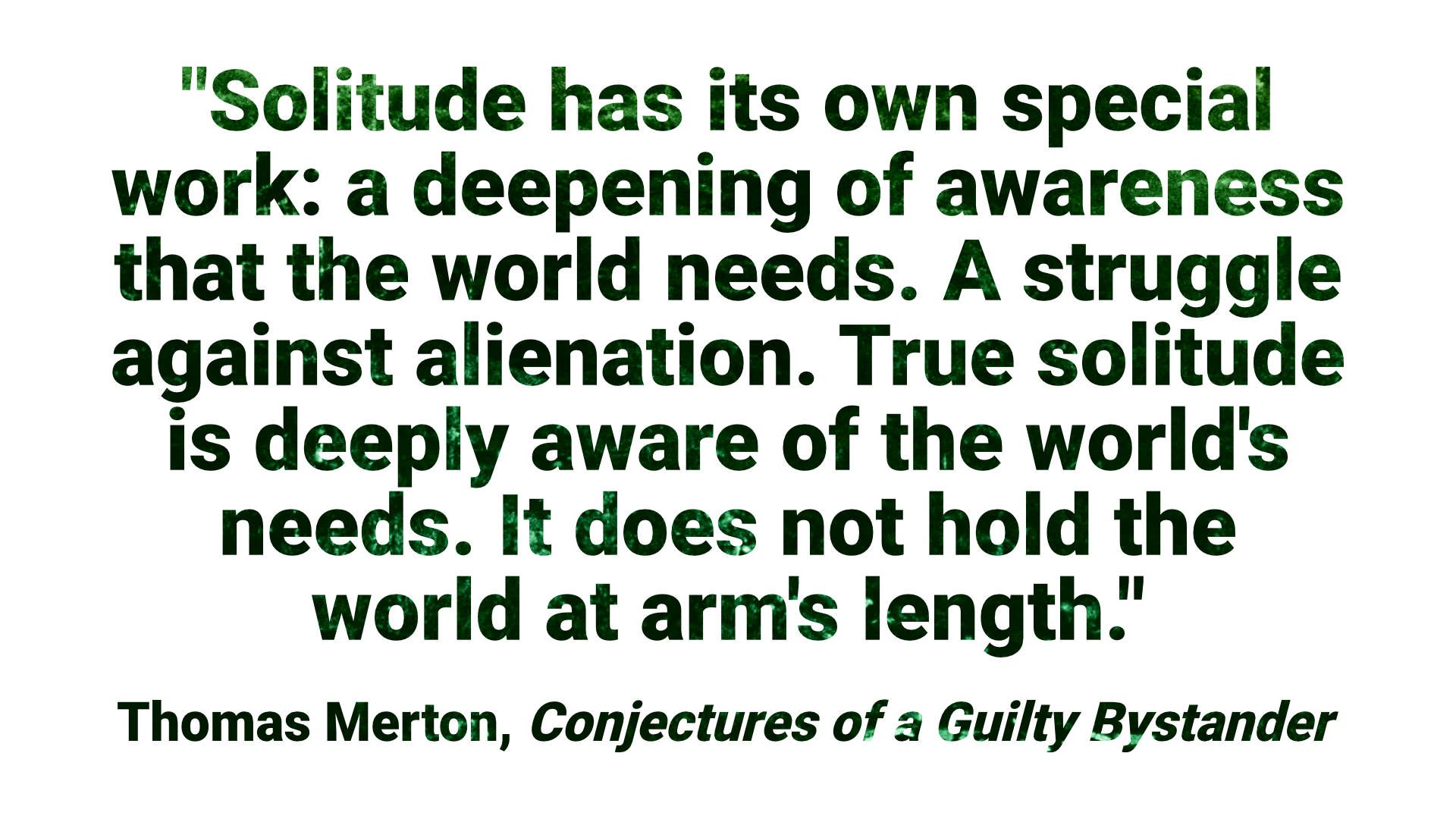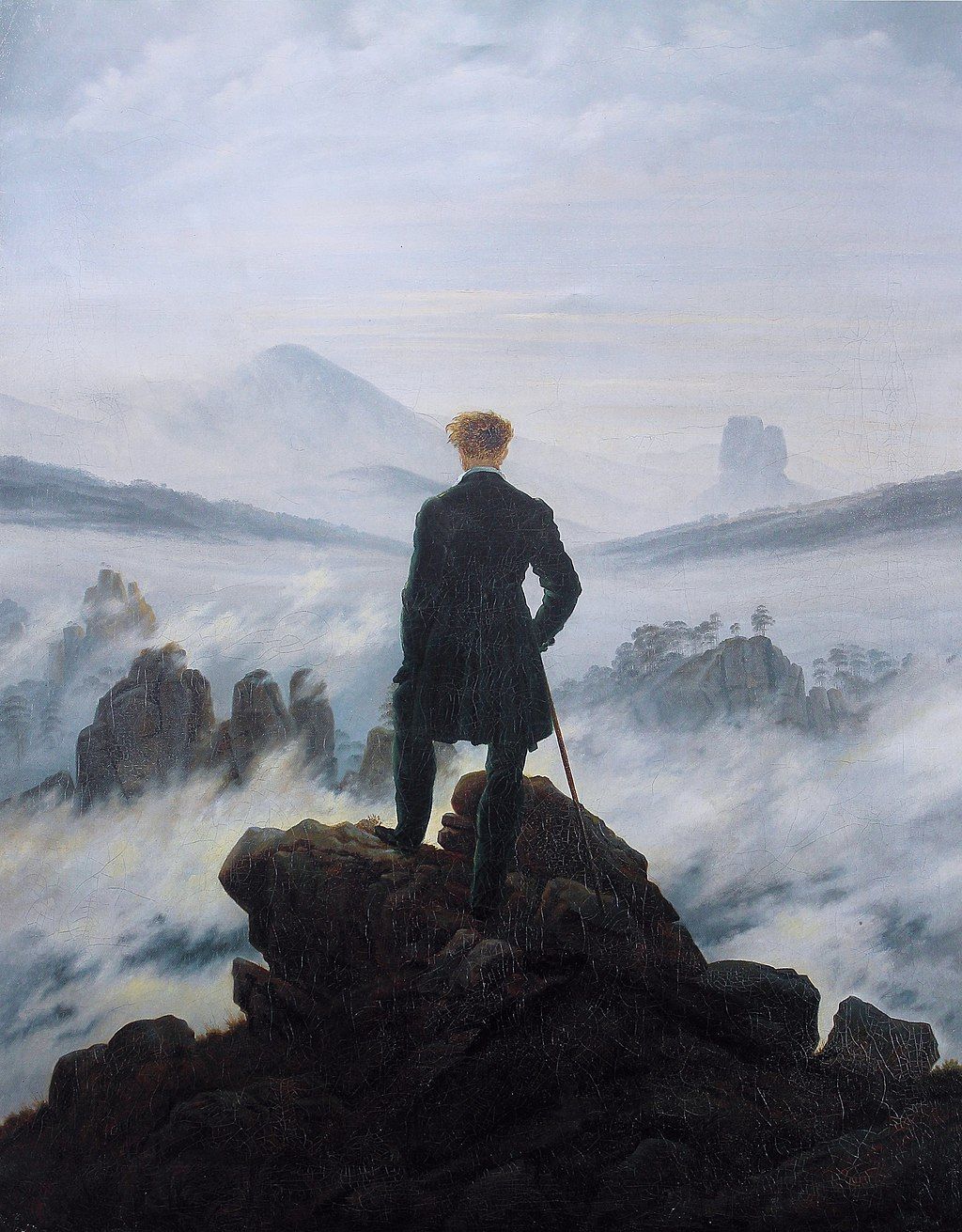Loneliness
How can we create an environment in high schools in which all stakeholders (students, teachers, admin, parents) can feel connected and feel less alone? Loneliness presents a profound challenge for educators, and I feel like I'm just now seeing it.

As summer break begins, I was reflecting on a note I received from a student this past month. As a teacher, notes from students are some of the things I most treasure from my career. Writing is no longer a typical way for students to express themselves. Just the fact that a student took the time to write anything—little alone a note of thank you is rare and valuable. This note especially stood out to me, however, because the student thanked me for making them feel less alone.
When we evaluate the typical duties of a teacher alleviating loneliness is not often one that comes up, and I don't think I even consciously made an effort to make this student feel less alone. However, thinking back to my time as a student, I certainly understand what it means to feel alone. Also, teaching can be a very lonely career. The way most high schools are set up makes them very lonely places.
The question that comes to mind is, how can we create an environment in high schools in which all stakeholders (students, teachers, admin, parents) can feel connected and feel less alone?
Solitary Leaf
Walking back to my apartment one afternoon in college, I was overwhelmed by a sense of loneliness. It wasn't any particular event that had caused it, but rather a profound disconnection from those around me. I was trying to find my place and the sense of loneliness was intense that particular day. It was a beautiful sunny, fall afternoon and the leaves were starting to drop. As I walked along the sidewalk, a solitary leaf blew across my path.
Suddenly I was struck by an intense sense of connection. I believe it is best described as a transcendent moment. It seems silly that a leaf blowing across a sidewalk could extinguish my sense of loneliness, but it did. I can't rationalize why. Even today, as I reflect on that moment I feel that strong sense of connection.
Being an analytical person, I have often thought about that moment and tried to rationalize what I felt. Was it the leaf's connection to the tree and the wind? Was it the fact that the solitary leaf was an archetype for my lonely walk? Whatever it was I believe that we need to find a way to help students find that profound sense of connection. It is the only way to combat the loneliness that is destroying this generation.
How do we create experiences for students and teachers that connect?
The Pandemic and Social Media
The current generation of students feels an acute sense of loneliness even more than my generation ever did. While many factors contribute to this, the pandemic and social media are two factors that are easy to identify as unique to this generation. Loneliness seems to be one of the most prevalent connections this generation shares.
"We feel alone, and in this, we are connected."
Leo Babauta
Social media catches the blame for many of the ills of our society, but the effect it has on teenagers is well-established and pervasive. Teenagers are not emotionally or cognitively equipped to deal with the pressures placed on them by social media. The result of these pressures is the perception that they are alone.
In a U.S.-based study, participants who reported using social media for more than two hours a day had about double the odds of reporting increased perceptions of social isolation compared to those who used social media for less than 30 minutes per day.
– U.S. Surgeon General, Our Epidemic of Loneliness and Isolation
Harms of Social Media on Teenagers
- Harvard School of Public Health - How social media’s toxic content sends teens into ‘a dangerous spiral’
- Mayo Clinic - Teens and social media use: What's the impact?
- NPR - Teens say social media is stressing them out. Here's how to help them
- Verge - US Surgeon General says social media may be hazardous to teen health
The pandemic also physically isolated many teens during critical formative years for social connection and rights of passage. The physical isolation forced many further into the social media black hole, and many have not learned to break back out now that most things have returned to normal in our schools. They may not be physically isolated anymore, but they feel disconnected and lonely.
In schools, we are seeing an increase in anxiety, depression, and other mental health issues, but I believe these are symptoms of the same issue: feeling lonely. Humans are social creatures by nature, and our students are missing the vital connections that all humans need.
While social media and the pandemic destroyed connections, they offer opportunities to rebuild. We need to find ways to help students build connections with others.
Solitude: Combating Loneliness
We need to distinguish between being alone and feeling lonely. As an introvert and a creative some of the most important times I have is when I am alone. For some solitude is not a comfortable place to be, and for many of our students, this is the case. However, solitude is a necessary part of the human condition and students need to learn its value.
Solitude is not the same as loneliness. While solitude by its nature implies isolation, there is a profound sense of connection in solitude that is not found in loneliness. It is in solitude that we are free to sit with our emotions and learn from them. From drugs to Tick-Tok videos, teens and adults are seeking ways to numb and suppress emotions. Numbing emotions do not make them go away, and the results are often self-destructive. Embracing solitude and learning to find connections with the world around us is a critical skill that we so desperately need in our fast-paced, modern world.

Thomas Merton understood solitude probably more profoundly than most. As a Trappist monk at the Abbey of Gethsemani in Kentucky, he spent much of his day in solitude. To him, solitude was not pushing the world away, but rather bringing it closer and sitting with it. Too often we rush through our busy lives without ever seeing or feeling what is around us. In the hustle and bustle, we are disconnected and alone. The practice of mindfulness provides perspective and helps us to see the connections between our actions and the world around us.
When I was studying art history in college, I was especially captivated by the work of the Romantic landscape painters. From the German and British painters to the Hudson River School, I feel that this art style captures the idea of solitude. While the landscapes are often vast and expansive, the goal of the painter is to connect the viewer to the world. Physical isolation does not equate to disconnection. Rather there is a strong sense of connection.

If we could design experiences for students that capture this same sense of connection, I believe we could find a way to combat loneliness and help our students find a community. Service is one way that I could see this happening.
Collective Loneliness and Service
Building a community in high schools is difficult. Teenagers are trying to fit in while at the same time trying to establish themselves as unique. It's like you have to be unique to fit in, which is a horrible way to form a sense of community. Community requires a common interest and teenagers have such a diverse set of interests.
In her podcast with Dr. Vivek Murthy, Brené Brown describes several different types of loneliness, and I think the one that schools are best equipped to heal is collective loneliness. Building a network of people that share interests or purposes is achievable, and I think that our schools must design experiences that create a sense of collective belonging.
"Collective loneliness is the hunger for a network or a community of people who share your sense of purpose and interests."
Brené Brown
How do we establish a common sense of purpose in our schools when we have such a diverse set of interests? One of the things I most admire about this generation is their sense of social justice. They have a strong desire to see a fair playing field for everyone, which I believe creates a natural common purpose: service. If we can build a community of service, then I think students will join a community and overcome the sense of collective loneliness.
Community service is often watered down and just means complying with a scholarship requirement. The goal of service in this case would need to build connections and community. This is not something that can be fake, but rather there needs to be a real impact. By making a difference for others, students will build connections to the community and create meaningful bonds with the people they serve.
The Challenge
Loneliness presents a profound challenge for educators, and I feel like I'm just now seeing it. It is a challenge that everyone is facing according to the Surgeon General (Our Epidemic of Loneliness and Isolation, U.S. Surgeon General), and I think we must make this a greater priority in the education space. The challenge is finding ways to make connections that build community and reduce loneliness.
Service is one way that I think we can start tackling, but I think the challenge is to get creative and find other ways to build connections. The student that wrote me a note thanking me for helping them feel less alone has found ways to build other connections, and I'm proud of him for the connections he's built. I hope that with some intentionality, I can help other students build connections and overcome the loneliness that is so pervasive in our society and schools.